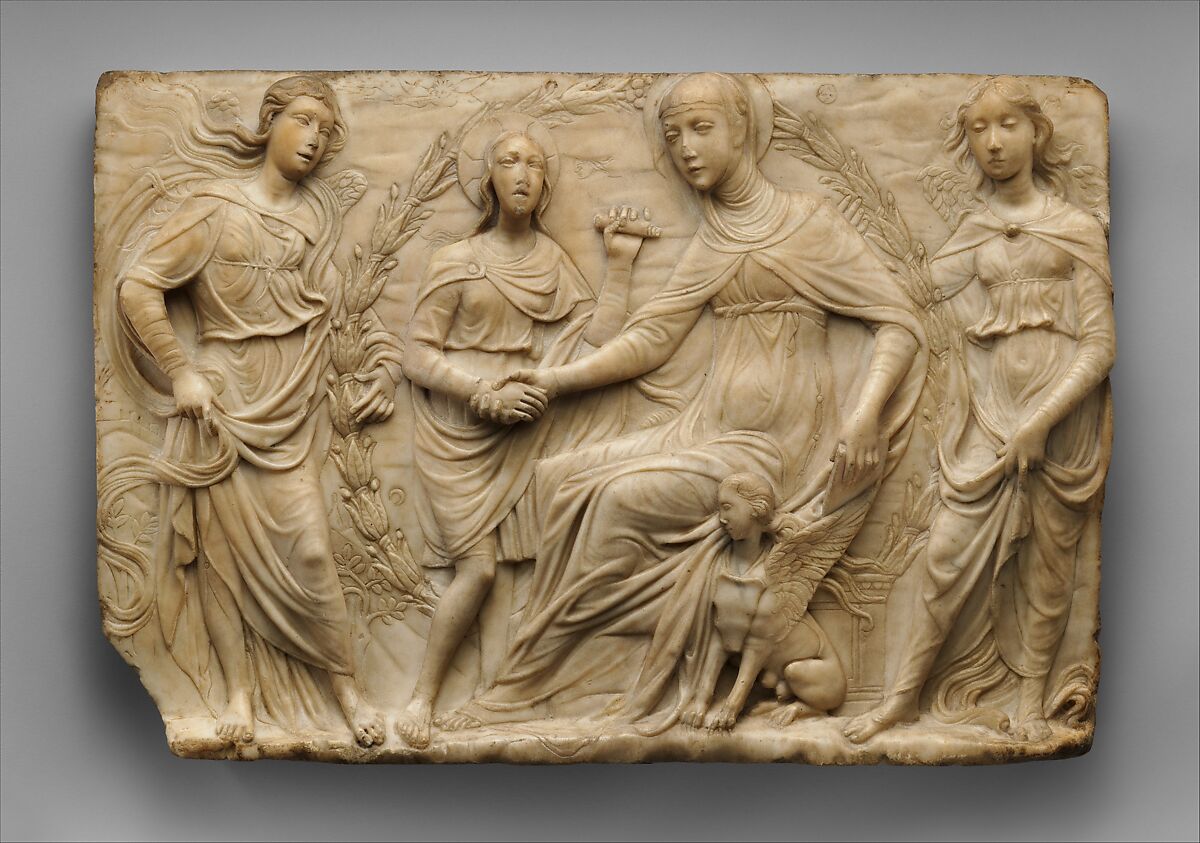He was one of the pioneers in the development of ceramic art: Who is Agostino Di Duccio?
Unlike contemporary artists, Agostino was not inspired by ancient Rome. He showed an affinity for the Neo-Attic forms of Greco-Roman art that developed in the Attica region of Greece.

Italian sculptor and architect. He played an important role in the development of ceramic art in the 15th century with the technique he developed in coating reliefs. He was born in Florence. In 1433 he left Florence as a mercenary. He did not return to Florence until 1442 when he made the altar of the Cathedral of Modena. He assisted Donatello and Michelozzo with their work at the Church of Santa Socrus Annunziata in Florence. However, he left the city because he was accused of stealing the church's silver. It is known that he went to Venice in 1446 and worked with Bartolommes Buon, one of the late 15th-century engraving artists. After 1450 he lived in Rimini and Perugia. He returned to Florence in 1463, where he entered the guild. After 1473 he went back to Perugia and spent the last eight years there.
Unlike contemporary artists, Agostino was not inspired by ancient Rome. He showed an affinity for the Neo-Attic forms of Greco-Roman art that developed in the Attica region of Greece. In addition to the carved decorations, the low reliefs he created are in flat and schematic forms, in a decorative and intense linear style.
The Altar of the Cathedral of Modena, dated 1442, in which he embodies scenes from the life of St. Gimignano, is considered his first important work. The high relief figures he made on a plain and plain background suggest that he was a student of Jacopo della Quercia, who worked at S. Petronio in Bologna from 1425 to 1438. Some critics see the influence of Luca della Robbia in these reliefs. It is also likely that he was influenced by Ghiberti, who made the famous bronze doors of the Florence Baptistery. But he does not have the illusory influence of Donatello and the Rossellino brothers.
Agostino's masterpiece is the series of high reliefs that form the interior sculpture-decoration of the Temple of Malatesta in Rimini from 1450-1457. In this temple, he worked with the architect Alberti and the painter Picro della Franccsca. The high reliefs made by Agostino in the temple bring to life the Trivium and Quadrivium, which represented art and science in the Middle Ages. The linear beauty in this work is reminiscent of eastern calligraphy as well as the paintings of Botticelli, the famous painter of the next generation.
Until 1467, he decorated the façade of the Saint Bernardino House in Perugia. The most striking part of the figures in these reliefs is placed above the entrance door. Here the sad, soulful figure of St. Bernardino is surrounded by angels playing musical instruments.
Agostino di Duccio stayed in Bologna for a while in 1463, drafting the façade of the Church of St. He also decorated the altar of the Church of St. Domenico in Siena. In the last ten years of his life, he produced works of various genres in smaller formats. Among them is an elegant Tabernacle (the ornate cupboard in which the Holy Grail is kept in Catholic churches) for the Florence Ognissanti Church.
WORKS (mainly):
Altar of Modena Cathedral, 1442, (Modena);
Carved Interior Decoration by Tempietto M' alatestiano, 1450-1457, (Rimini);
Madonna and Child, 145C-1457, (Victoria and Albert Museum, London);
Front of the Temple of St. Bernardino 1457-1467,'(Perugia).
